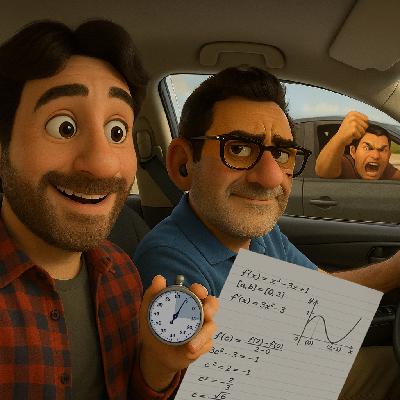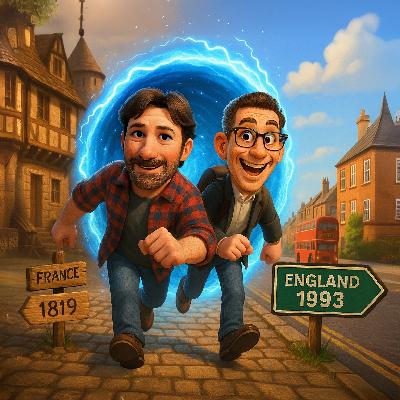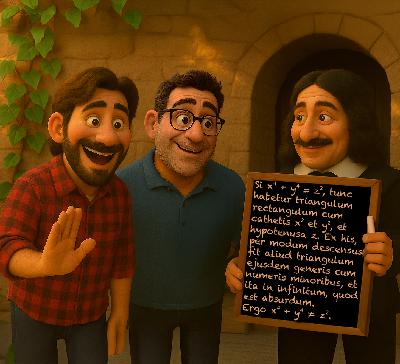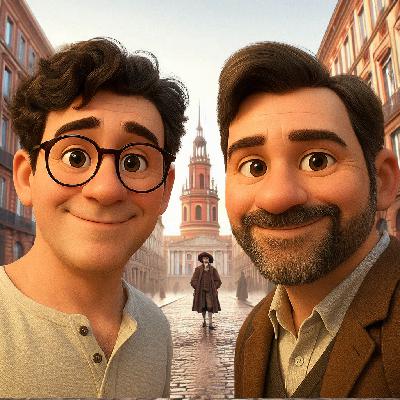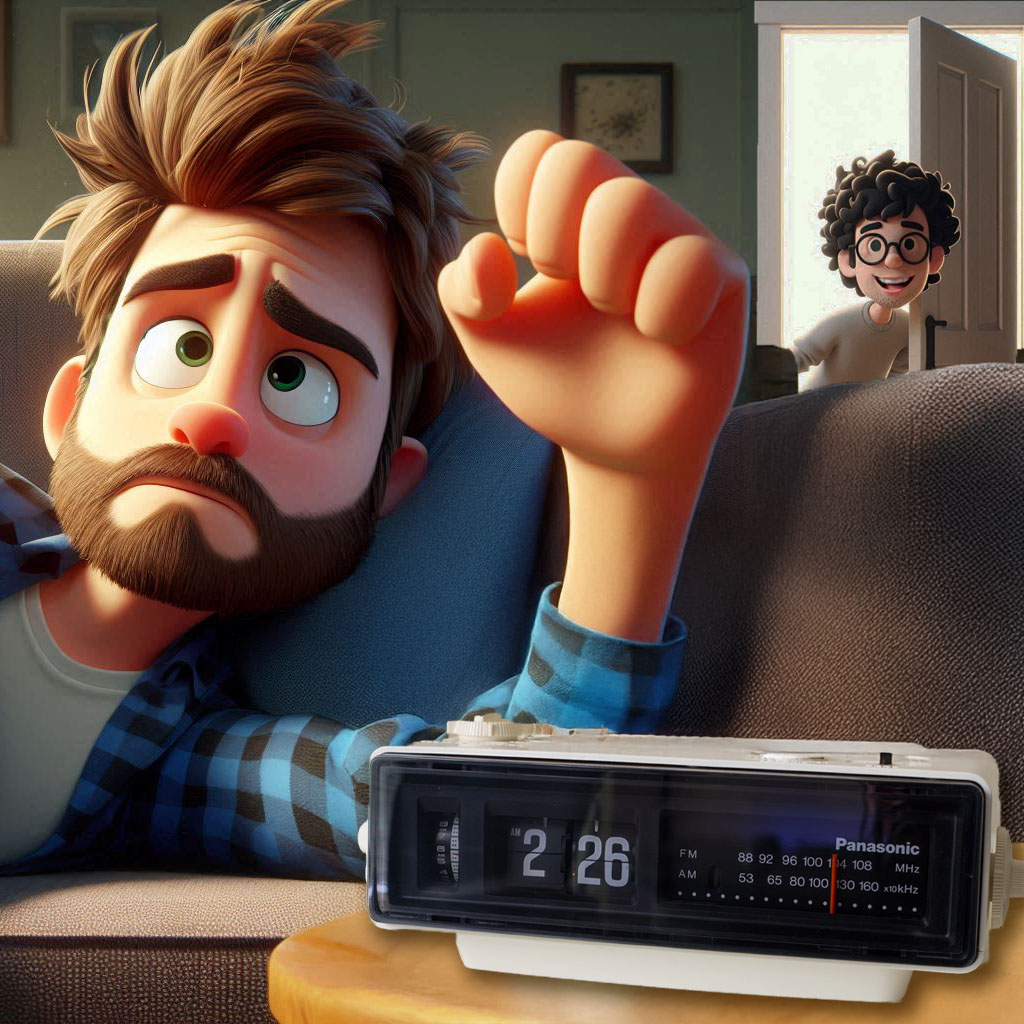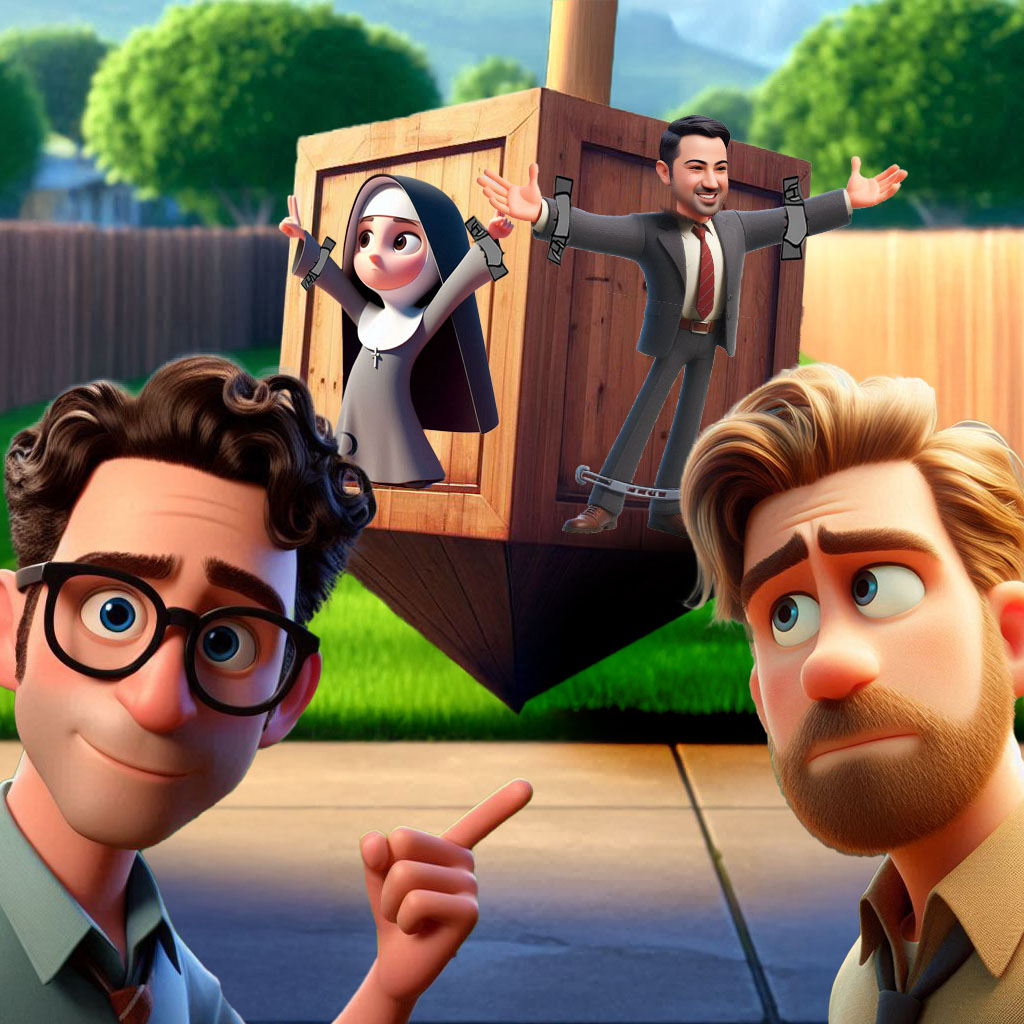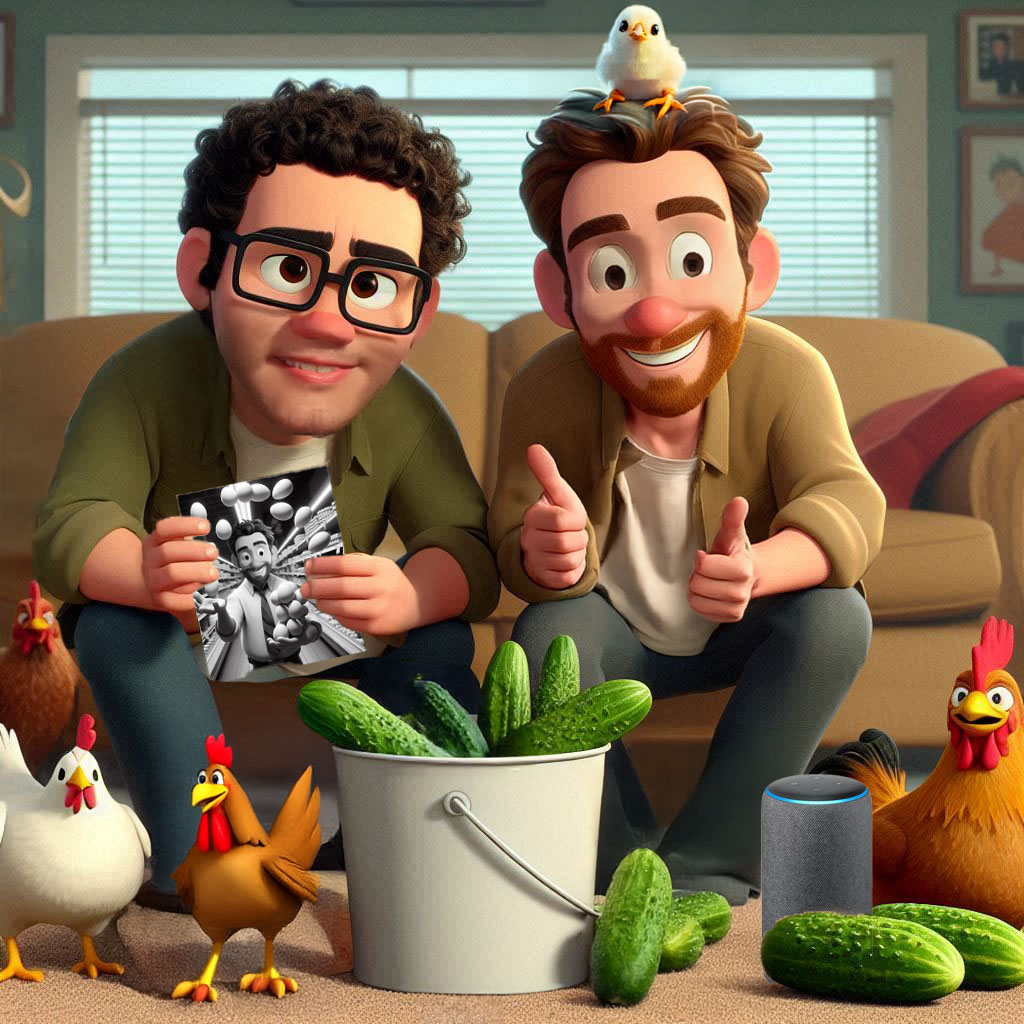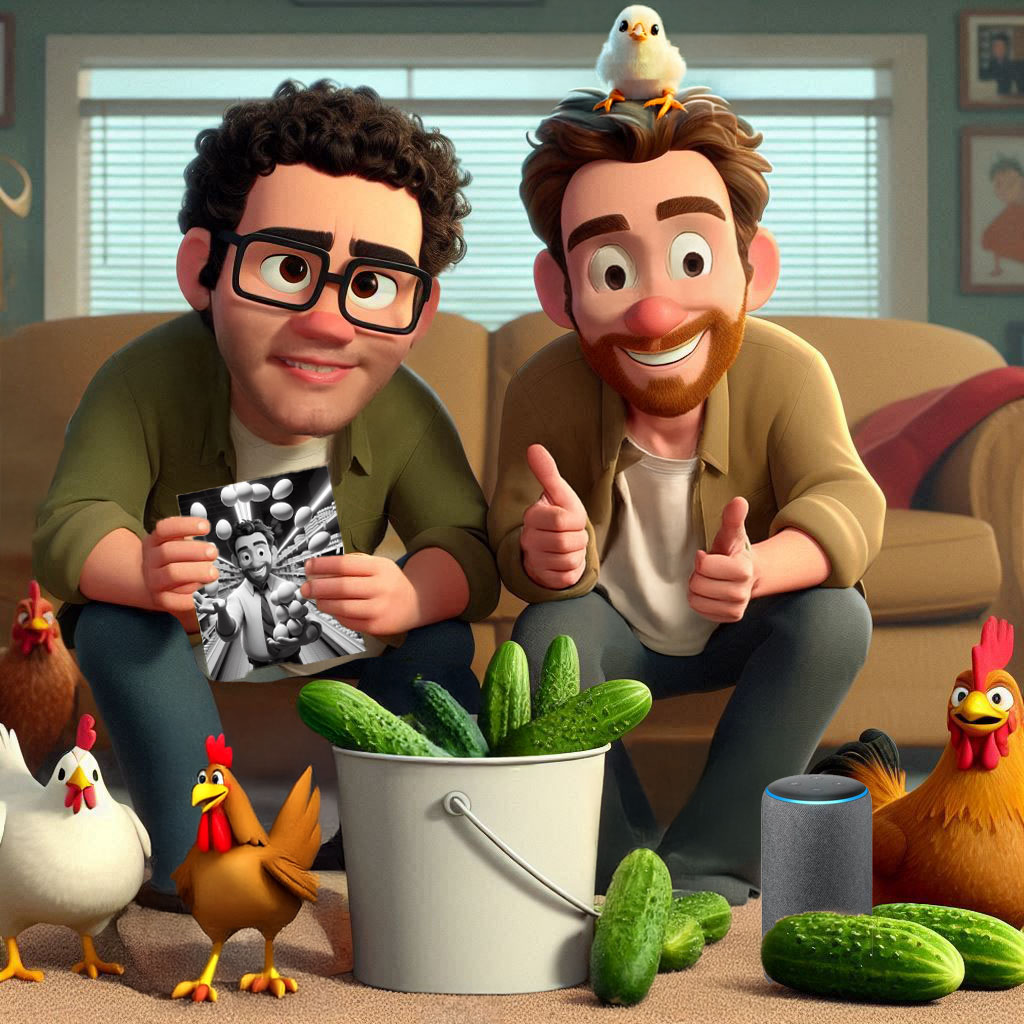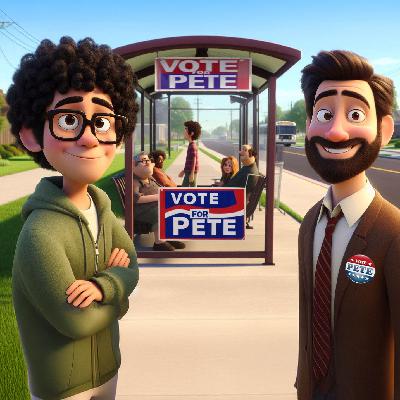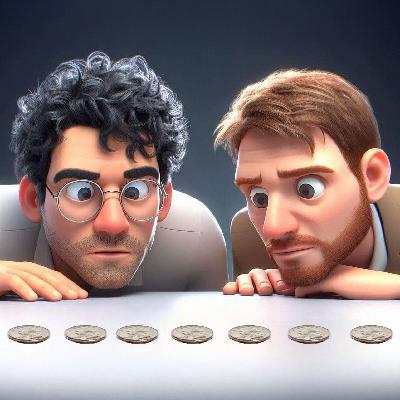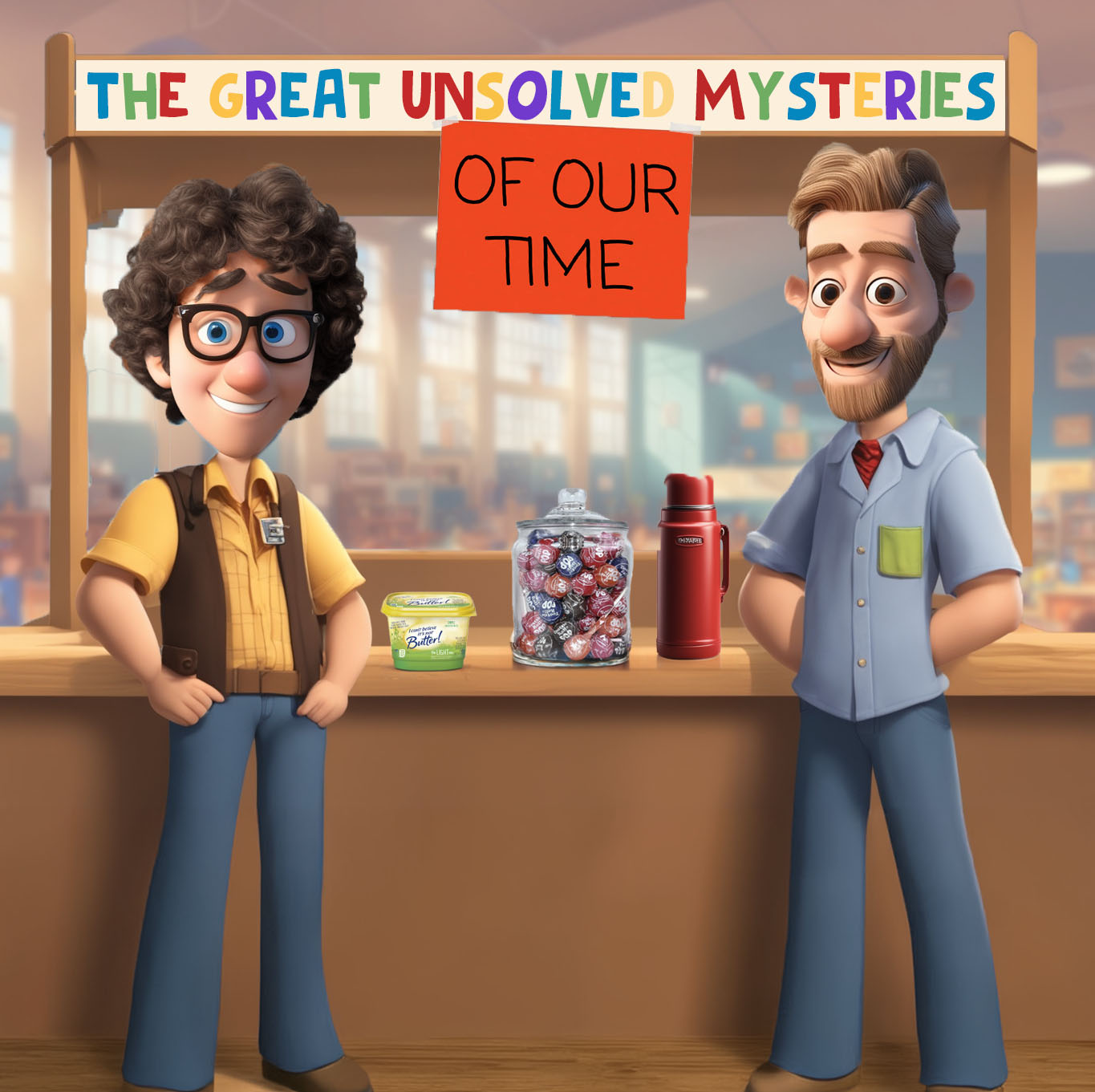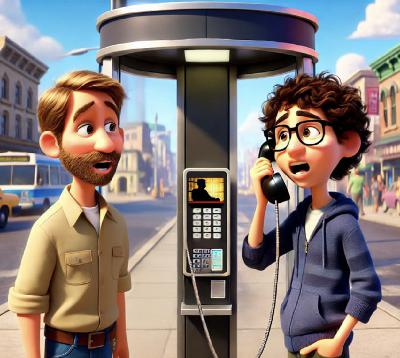Discover The Math Club
The Math Club

The Math Club
Author: Pete and Noah
Subscribed: 48Played: 358Subscribe
Share
© 2022
Description
Join hosts Peter Littig and Noah King as they discuss and explain mathematical topics with their own unique style. Full of information that will interest and entertain math lovers as well as those who maybe don't love it quite that much… yet. Mathematical concepts, history, paradoxes, and puzzles await you, along with a generous helping of witty banter and fun. Calling all members…. The Math Club is open!
Email - mathclubpodcast@gmail.com
Twitter - @mathclubpodcast
Email - mathclubpodcast@gmail.com
Twitter - @mathclubpodcast
73 Episodes
Reverse
Hey there Math Club. Our most recent episode, Math Club Junior: It's a Zoo Out There, was our second special episode made specifically for kids. When Noah was planning how he wanted to use the episode with his own third grade class, he knew that some visuals would come in handy, so he created a slide deck with images to go along with each problem that the students will have to solve. If you'd like to use this resource along with the audio, you can find it by going to: https://bit.ly/mcj_zoo We hope you find these images to be fun and helpful, and we'll see you next time!
In this long-awaited followup to our popular Math Club Junior episode, Pete and Noah are back with Mrs. Morrison's class, as chaperones on a field trip to the local zoo. Listen in as our group of Junior Zookeepers meet a whole new cast of zany characters, and once again learn that math is everywhere if you just look around. And just like last time, this story is full of interesting math challenges for listeners in the upper elementary grades to enjoy and solve. • A slide deck with visuals to go along with each problem from the story Leave us a voice message Find us on Twitter Send us an email
A family visit to the Netherlands introduces Pete to the idea of average speed zones, which illustrate a particularly interesting mathematical theorem. Join our hosts as they really go off on a tangent about the mean value theorem, and how it just might get you a speeding ticket. Leave us a voice message Find us on Twitter Send us an email
It's finally here! Part Three of the Fermat Trilogy! In this exciting conclusion, Pete and Noah talk about the mathematicians who ultimately proved (or thought they'd proven) Fermat's Last Theorem. Join us for the final chapter of this riveting 350 year journey! The Proof - Nova Documentary on Andrew Wiles's proof Leave us a voice message Find us on Twitter Send us an email
Join us for part two of our deep dive into the history of Fermat's Last Theorem. In this episode, Pete and Noah focus on the fascinating story of Sophie Germain, a 19th century French mathematician who pursued a proof in the face of overwhelming obstacles. Come learn about this impressive chapter in the saga of one of the most interesting problems in mathematical history. Leave us a voice message Find us on Twitter Send us an email
A few episodes back, our hosts talked about the great unsolved mathematical problems of our time, and Pete teased an interesting story about one such problem that was finally solved not too long ago. In this first of a two-part episode, we dive into the fascinating story of Fermat's Last Theorem... from its inception, to Fermat's bold claim that he had a proof that he couldn't share, to the mathematical greats of yesteryear who took up the challenge to prove it. Join us for a look into this intriguing conjecture, and its amazing history. Leave us a voice message Find us on Twitter Send us an email
In this episode, Pete and Noah are joined by Andy Looney, the creator of the card game Fluxx, to talk about Math Fluxx and his history designing games. Whether you're a math person who loves a good game or a game person who loves to do math, we're sure you'll find Andy and his story to be interestingly enjoyable. Game on! Looney Labs Leave us a voice message Find us on Twitter Send us an email
If you've ever seen a science fiction movie or TV show, then you've heard of the spacetime continuum. But what is it, and is there math that describes it? In this episode, Pete and Noah dive into the facts about spacetime, and its fascinating mathematical history. Leave us a voice message Find us on Twitter Send us an email
It's the holiday season, and Pete and Noah are getting into the festive spirit by looking at the math behind a favorite Hannukah game. Join our hosts as they delve into the probabilities of the dreidel and uncover a counterintuitive truth about its fairness. Whatever traditions you and your family look forward to at this time of year, we promise a lively and interesting time as we take this topic for a spin. Seasons Greetings! • Robert Feinerman's paper, An Ancient Unfair Game Leave us a voice message Find us on Twitter Send us an email
In our last episode, finding Primo, Pete explained a couple of tests that mathematicians use when trying to decide if very large numbers are prime. We thought it might be helpful to see the math written down, so we put together this video bonus. Finding Primo - full episode
Have you heard the big news? There's a new largest known prime number, and Noah wants to know how it was discovered. In this episode, Pete explains the various tests used to determine the primality of insanely large numbers, and there's even a prime challenge for you to sink your teeth into. Leave us a voice message Find us on Twitter Send us an email
Are you ready to revisit the best of The Math Club? Pete and Noah share a trip down memory lane with a pair of special guests. But as they dive deeper into their past episodes, a nagging feeling grows harder to ignore.. Who are these mysterious guests, and what strange secret are they hiding from our hosts? Episodes we reference in our conversation: Tales from Decrypt Positive Thinking Discovery vs. Invention MathGPT Try out NotebookLM Leave us a voice message Find us on Twitter Send us an email
The memory of a restaurant-choosing game from grad school inspires Pete and Noah to look at different voting systems, and the math behind how they work to select a winning candidate. From standard majority rules to ranked choice to plurality with elimination, join our hosts for a lively (and timely) conversation about how our voting system can be just as important as our vote. Leave us a voice message Find us on Twitter Send us an email
An unlikely string of coin flips leads to a conversation about a counterintuive puzzle that Pete found online. Join in on the fun as Pete and Noah dissect this problem, and talk about multiple ways to approach understanding its solution. • Daniel Litt's Twitter post with the puzzle • Noah's Scratch simulation of the problem • Leave us a voice message • DM us on Twitter • Send us an email
Hey Math Club... Pete and Noah need your help with a data mystery, so they put this mini-episode together. If you think you have any info that can help shed some light, drop us a line... Leave us a voice message DM us on Twitter Send us an email
Unsolved. From the origin of Stonehenge, to the identity of Jack the Ripper, to the location of all those missing dryer socks, the world is full of unsolved questions. But what about math? Join Pete and Noah as they discuss some of the great unsolved problems facing mathematicians today. Leave us a voice message Find us on Twitter Send us an email
Pete's efforts to help Noah prepare for an upcoming math competition lead to a conversation with Kristen Chandler, the executive director of MATHCOUNTS. Join Pete and Noah as they learn about this fascinating organization that provides engaging math programs to middle school students around the country. MATHCOUNTS website Email Kristen Chandler Leave us a voice message Find us on Twitter Send us an email
A batch of almost perfect waffles leads Pete and Noah into an exploration of an interesting probability result. Come find out how, whether you're eating breakfast or hiring a new employee, math is here to help you make the best choice. Leave us a voice message Find us on Twitter Send us an email
It's time for our second episode about the mathematics of Deal or No Deal. At the end of Part 1, Noah asked Pete if The Banker follows certain set rules or patterns when deciding how much to offer contestants, and a challenge was born. Is it possible to use data from past shows to devise an algorithm that can predict the offers? Stay tuned as Pete takes Noah along on his mathematical journey in search of a model that works. Leave us a voice message Find us on Twitter Send us an email
The recent return of this classic game show prompts Pete and Noah to discuss the probability and statistics at work, to see if they can figure out what makes for a "good deal". Join in as they dive into the mathematics behind the show. They'll even present you with a challenge that could earn you a shout out on a future episode. • Deal or No Deal Data for this episode's challenge Leave us a voice message Find us on Twitter Send us an email




